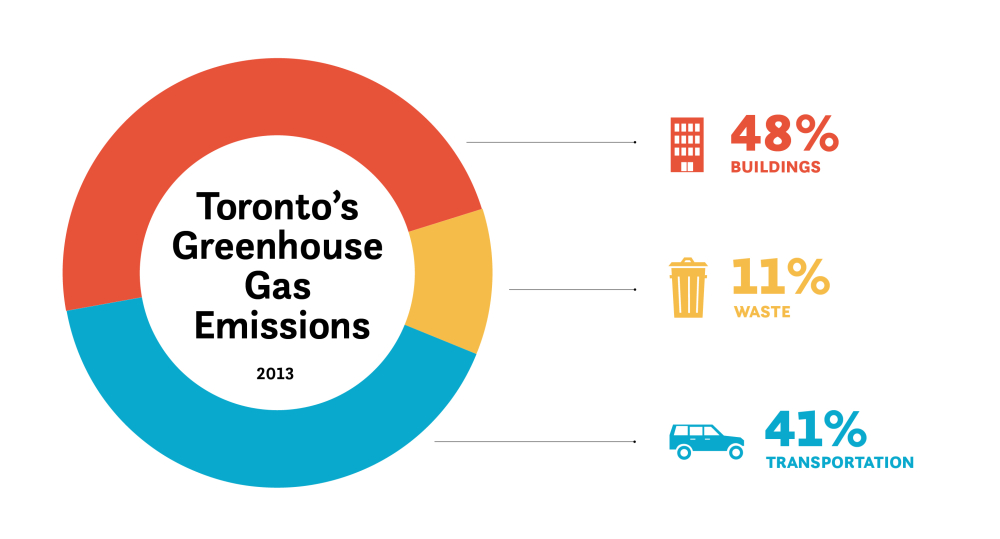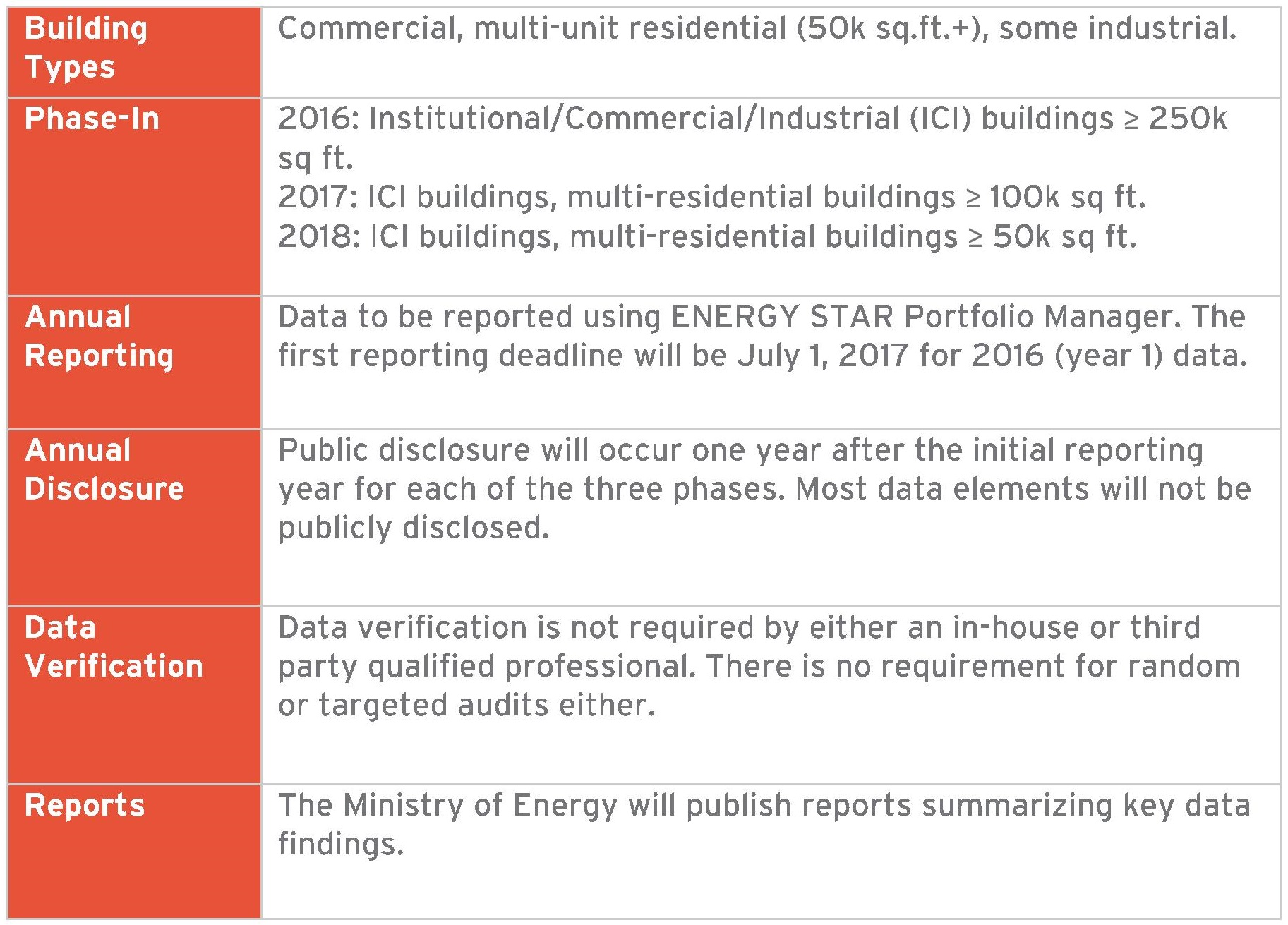The Ontario government is proving its commitment to large building energy reporting and benchmarking. Following closely on the heels of the enabling legislation, the Ontario government has proposed draft regulations for its province-wide large building energy and water benchmarking and reporting (EWRB) policy. TAF is proud to have contributed to the evolution of EWRB at the city level (Toronto) and at the provincial level. We strongly support the Province’s accelerated action on this matter.
If you cannot manage what you do not measure, then EWRB is a logical and necessary tool to get a better grasp on energy use and GHG emissions from the buildings sector. Toronto’s building stock accounts for approximately 48% of Toronto’s GHG emissions – clearly buildings are a significant source of urban GHG emissions that need to be tackled if Toronto is realistically going to reduce its GHG emissions by 80% by 2050: Yet our understanding of how to most effectively and efficiently curb energy use in buildings is dismal. Experiences with EWRB in the US are showing a positive correlation between energy conservation and EWRB. In addition to energy conservation and GHG emissions reductions, EWRB also contributes to local economic development. According to a modelling report for Toronto, EWRB has the potential to create 10,000 person-years of employment over a twenty-year period. A province-wide EWRB policy has the potential to have an even greater social, environmental, and economic impact.
Yet our understanding of how to most effectively and efficiently curb energy use in buildings is dismal. Experiences with EWRB in the US are showing a positive correlation between energy conservation and EWRB. In addition to energy conservation and GHG emissions reductions, EWRB also contributes to local economic development. According to a modelling report for Toronto, EWRB has the potential to create 10,000 person-years of employment over a twenty-year period. A province-wide EWRB policy has the potential to have an even greater social, environmental, and economic impact.
While the full details of the draft regulations are available on the Environmental Registry, there are a number of key policy elements that deserve highlighting:

Overall, the draft regulations are largely reflective of the extensive consultations the Province carried out. However, there are 3 key policy elements that need to be revised in order to ensure that EWRB has the full range of positive economic and environmental impacts. The regulations pertaining to public disclosure, data verification, and disclosure to municipal governments do not reflect current best practices and will hamper the impact of EWRB.
Recommendation #1: Make data verification mandatory
As noted above, data verification is not mandatory under the proposed regulations. A robust and mandatory process for verifying submitted data is crucial to ensuring that users have access to reliable, high quality data that can be drawn on to inform energy decisions. The importance of data verification was broadly acknowledged during early consultations with the Province with endorsement from a broad segment of stakeholders.
Recommendation #2: Publicly disclose more building data
While the Province is proposing to publicly disclose some benchmarking data, the list of data elements to be disclosed is exceptionally limited. Public disclosure is an essential complementary component of energy benchmarking that shouldn’t be minimized.
Broadly speaking, energy disclosure enables market transformation through greater transparency, awareness, and consideration of energy efficiency by many different actors (e.g. utility conservation programs, building owners and managers, tenants, etc.). Specifically, disclosure provides 3 positive impacts by: (1) enhancing benchmarking effectiveness; (2) improving program and policy design; (3) facilitating improved research on building performance.
We have identified 2 additional data elements that, at the very least, should be publicly disclosed: Building Age and Energy Use/Energy Use Intensity by Fuel Type. Disclosing these data elements would bring Ontario up to par with the leading US jurisdictions (Chicago, Boston, Washington DC, Minneapolis, NYC, Philadelphia) on EWRB.
Recommendation #3: Provide full disclosure of benchmarking data to municipal governments
We recommend the provision of fully disclosed benchmarking data to municipal governments on a confidential basis. The Ministry of Energy has strongly encouraged Ontario municipalities to engage in community energy planning. However, one of the greatest barriers to effective, efficient energy planning has been access to detailed, high quality energy data. The data that will be collected via EWRB will close this data gap. In addition to community energy planning, the full data set would be very useful for a variety of other municipal purposes, including infrastructure planning, program design and delivery, and tracking policy goals.
We need to get it right in Ontario
Ontario is pioneering an EWRB requirement for Canada and will likely serve as the model for the rest of the country. As the leading jurisdiction on EWRB in Canada, it is essential that Ontario implement benchmarking best practices that set a high and progressive standard.
If you see the value of EWRB and want to make sure your voice is heard by the Ontario government, please consider submitting comments on Ontario’s Environmental Registry. The deadline to comment is April 10, 2016.
